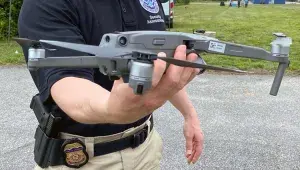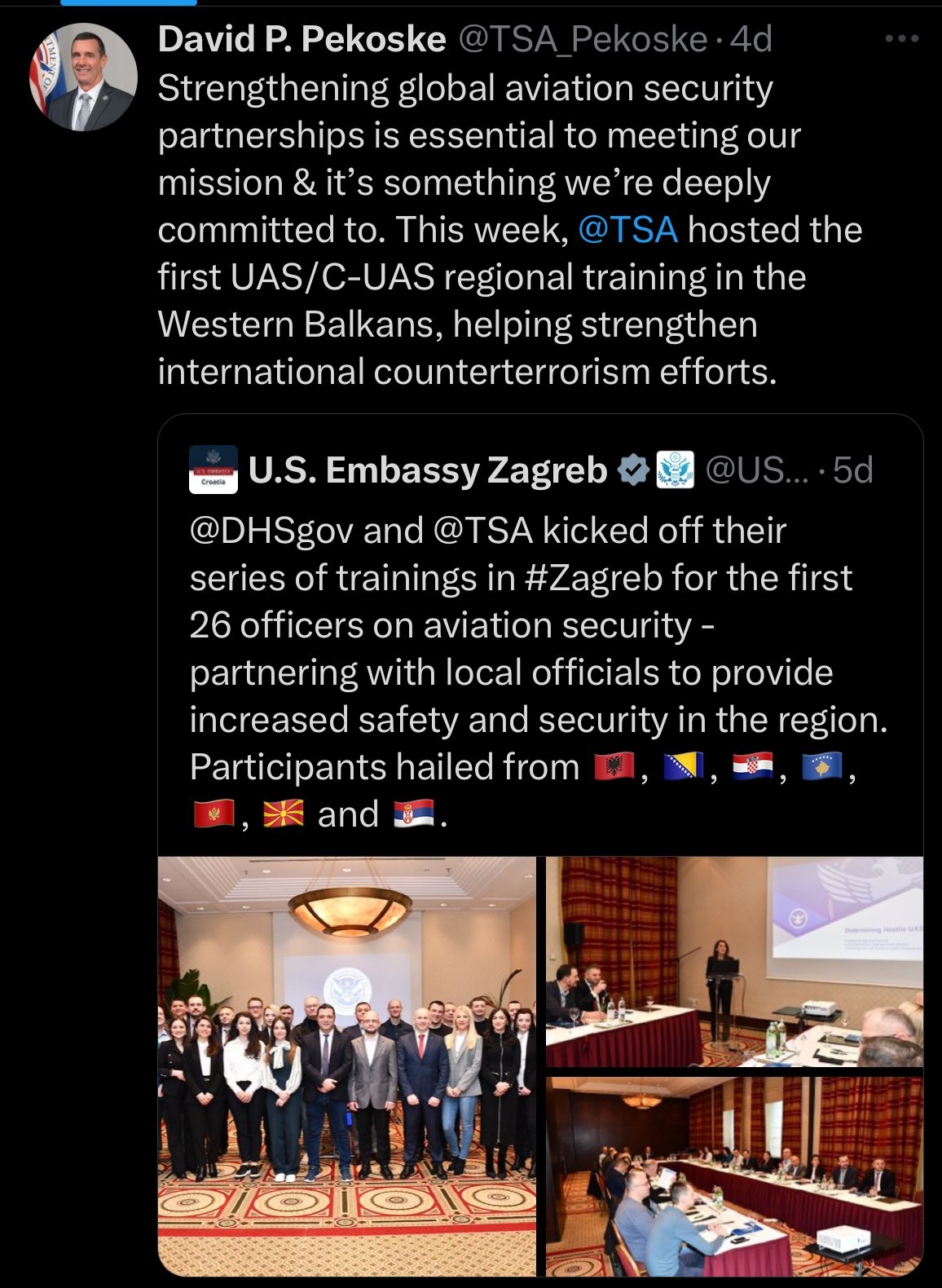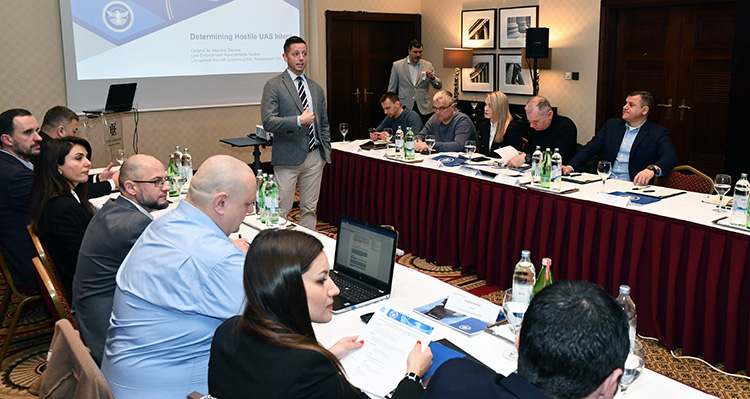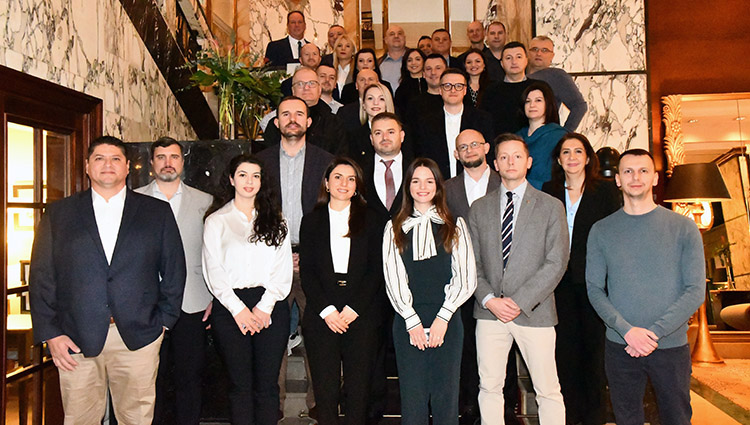 A Federal Air Marshal displays a drone. (LE/FAMS photo)
A Federal Air Marshal displays a drone. (LE/FAMS photo)
The threat of drones is on the rise, and TSA is tackling the threat head-on, not only here in the U.S., but around the world.

TSA took its drone, also known as unmanned aircraft system (UAS), security efforts to the Croatia capital of Zagreb for a three-day training course for 28 aviation representatives from seven Eastern European countries. This was the first UAS training outside the U.S. led by TSA’s Law Enforcement/Federal Air Marshal Service (LE/FAMS) since the start of the COVID-19 pandemic.
“After several decades of conflict and economic turbulence, airports and air carriers in the region are growing in terms of flights and passenger loads,” said Steve Petrick, TSA representative, who is based at the U.S. Embassy in Rome. “Unauthorized (drones) flying near airports can pose serious safety and security risks and cause disruptions and delays impacting airport operations.”
Petrick and Supervisory FAM Michael Caskey said TSA’s goal, through this training and other initiatives, is to expand worldwide partnerships, enhance international terrorism prevention efforts and “raise the global baseline of aviation security.”
“UAS continues to grow as an emerging threat worldwide,” Caskey noted. “Airports across the globe continue to see an increase in UAS encounters surrounding their airports, posing a risk to commercial aviation and operations.”
Caskey said the nefarious use of drones can create a possible criminal and terrorist threat to the world’s aviation system, and LE/FAMS is committed to supporting requests from TSA’s foreign partners to share best practices and provide information to strengthen partnerships with international transportation stakeholders and governments.
The course highlighted available planning, training and equipment and encouraged participants to develop UAS response plans, exercises and teams.

To aid and educate TSA’s Balkan stakeholders, Caskey said, “LE/FAMS and TSA’s International Operations developed the training to address the importance of risk assessment, emergency procedures and incident reporting related to UAS encounters. We shared information on counter-drone technologies, detection methods and response strategies to mitigate risks.”
“Small UAS containing advanced aviation capabilities are easily available on the commercial market,” added Transportation Security Specialist Gus Anderson. “These advanced technologies allow drones the ability to travel further and longer, creating a unique security challenge to commercial aviation.”
Anderson, Caskey and Petrick believe participants walked away with a basic understanding to plan and prepare operating procedures and the necessary resources to develop plans to respond to possible drone threats.
Petrick said this was the first of what he expects to be a series of regional trainings TSA and DHS will lead on aviation security in the Western Balkans under an upcoming project called Balkan Spirit 2.

“For DHS and TSA, our international partnerships are crucial to strengthening the global transportation security system and protecting the homeland,” Petrick emphasized. “As I always convey to my international partners, we are only stronger when we work together.”
By Don Wagner, TSA Strategic Communications & Public Affairs
